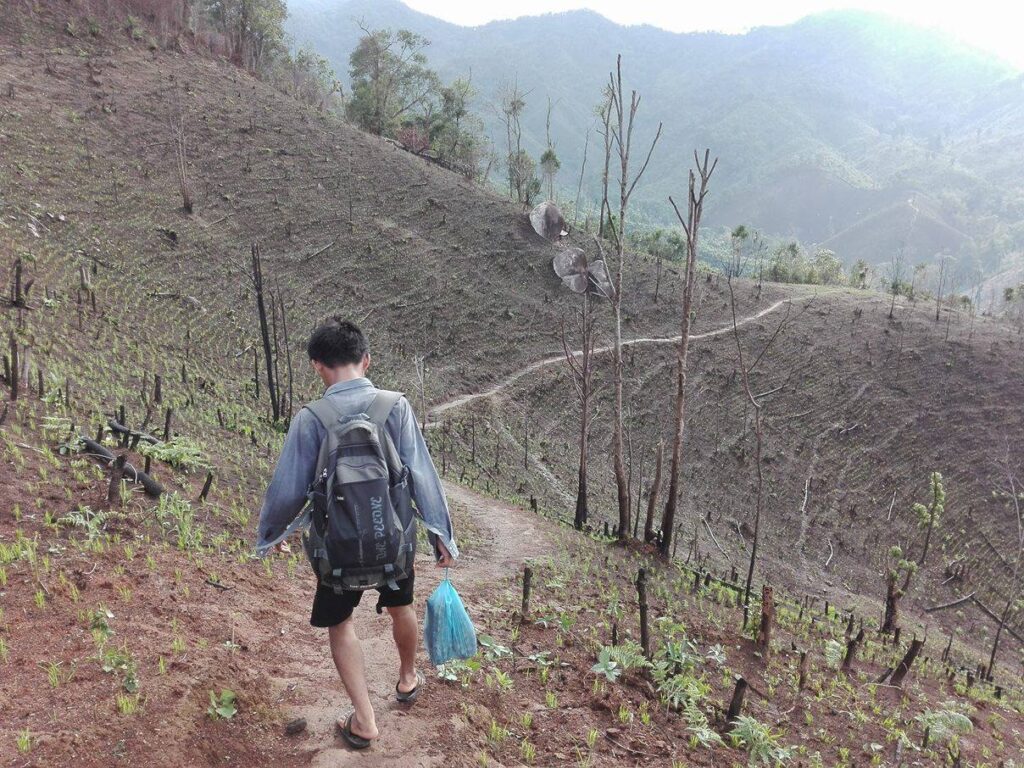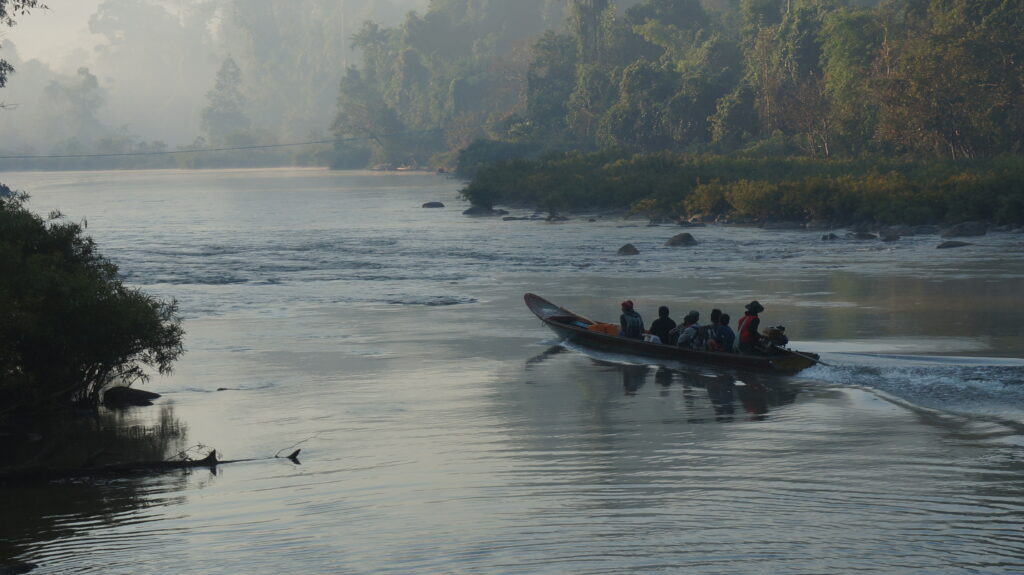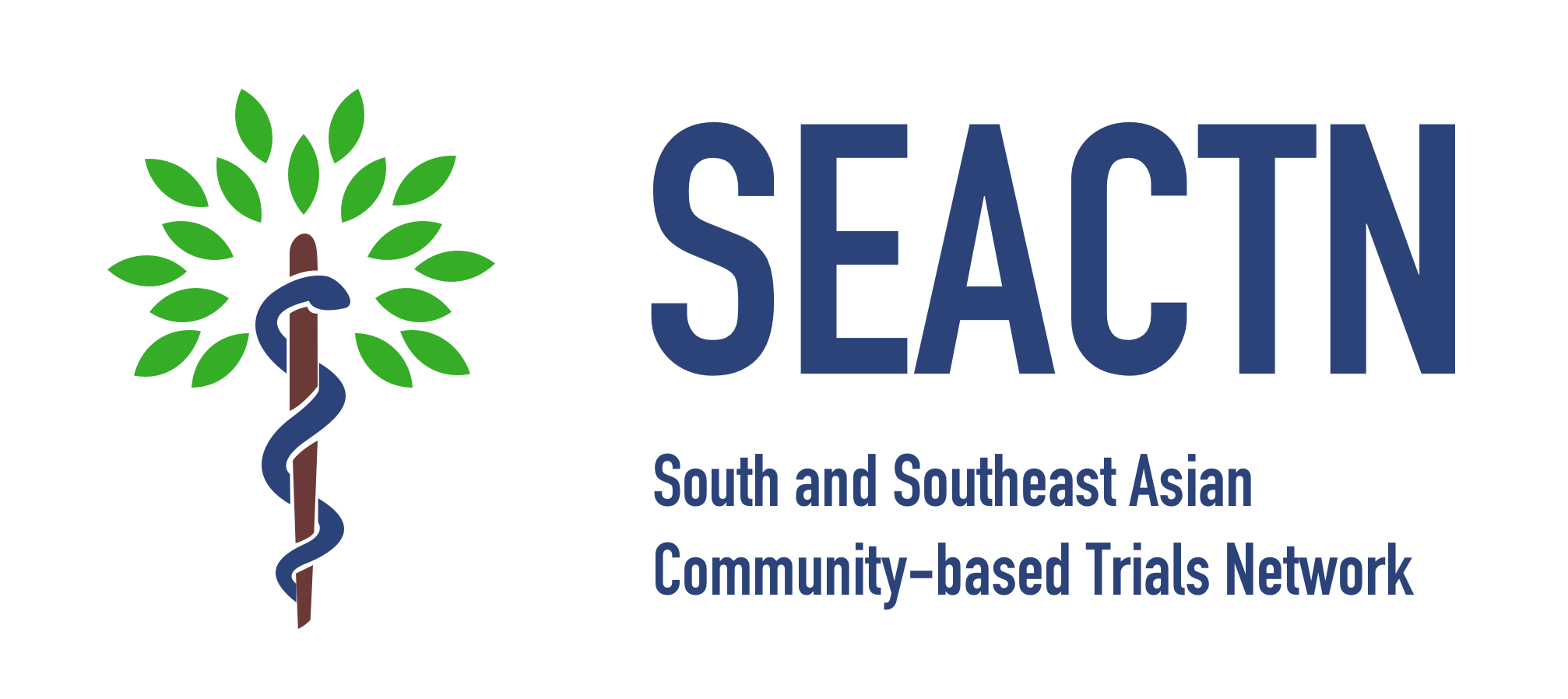The primary focus of SEACTN is currently on improving the management of febrile illness in rural South and Southeast Asia. The RFI project is a multi-country, multi-site initiative comprised of a number of prospective observational studies. The project has multiple parallel supporting activities.
- Incidences, causes, and outcomes of febrile illness in patients presenting to Village Health Workers
- Causes and outcomes of febrile illness in inpatients and outpatients in Health facilities
- Verbal autopsies in SEACTN villages
- Village and health facility mapping
- Stakeholder mapping and analyses
- Spot Sepsis
- Future activities: Creation of electronic decision-support tools
Incidences, causes, and outcomes of febrile illness in patients presenting to Village Health Workers
We are developing and deploying electronic data collection tools to capture the incidence, presenting syndromes and outcomes of febrile illness amongst individuals presenting to Village Health Workers (VHWs) at the most peripheral level of the health system. In Lao PDR, community healthcare providers working at primary health centres (PHCs) rather than VHWs will implement the project, as utilisation of VHWs is currently low.
Data collected from VHWs and PHCs will be complemented by parallel health seeking behaviour surveys, verbal autopsies, and village and health facility mapping projects, designed to gain a comprehensive understanding of the burden of febrile illness and access to care in the areas served by these health facilities and providers. We will also perform targeted aetiological investigations in a subset of patients presenting to WP-A providers and facilities.

Causes and outcomes of febrile illness in inpatients and outpatients in Health facilities
In this component of RFI, the activities will be concentrated around patients seeking care at higher-level health facilities (health clinics and/or district hospitals) in each of the four sites, located in the same geographical area as the VHWs and PHCs. More extensive aetiological investigations, as well as assays of host biomarkers, will be performed in patients with febrile illnesses attending these facilities.
Verbal autopsies in SEACTN villages
Little information exists on the febrile (and non-febrile) causes of mortality in the study areas. In collaboration with researchers from the University of Toronto, we have adapted the World Health Organization’s (WHO) Verbal Autopsy (VA) tool to conduct electronic VA questionnaires for all deaths that occur in SEACTN villages in Bangladesh, Cambodia, Lao PDR and the North Kachin site in Myanmar. Understanding the common causes of mortality and the circumstances that surround death will enable us to identify targets for interventions that can be implemented and evaluated within the SEACTN programme in the future.

Village and health facility mapping
A thorough understanding of local healthcare infrastructure is essential to direct referrals to higher-level care appropriately. Villages, transport networks and health facilities in the study areas will be mapped using field collection and satellite imagery, and detailed profiles created of the study villages including population statistics, communication and transport systems, health services and campaigns, physical environment and socioeconomic metrics. WHO’s AccessMod 5 software (www.accessmod.org) will be used to estimate travel time from the study villages to health facilities and potential gaps in local service provision identified. In addition to informing how future interventions can be deployed within the SEACTN, we will provide this information to health system planners and policy makers to help identify where new health facilities could be provided and existing services strengthened to achieve highest impact.

Stakeholder mapping and analyses
Throughout the RFI project, key stakeholders will be engaged and interviewed on the topic of expanding the remit of VHWs and other community healthcare providers to include management of non-malarial febrile illnesses. Stakeholders will include policy makers and managers within the ministries of health of the respective countries; representatives of international and national donor organisations; individuals and organisations responsible for the implementation and supervision of VHW and other community-based health programmes; and VHWs and community members. During the interviews, information and views will be collected about operational challenges, opportunities and policy bottlenecks concerning the expansion of VHW programmes, with particular attention to the key issues of health system integration, capacity, and sustainability. After an initial set of interviews with seed informants, selected after a stakeholder mapping exercise, additional interviewees will be identified through snowball sampling. Collected material will be analysed thematically, while interim outputs such as matrix tables or position maps will be constructed to better understand the role and interest of different categories of stakeholders, their resources, and their level of support to the expansion of VHW programmes.

Spot Sepsis
A key challenge facing VHWs and health care workers in remote settings is the identification of patients that require urgent referral to higher level facilities, which are often hours or even days away. In parallel with our partners at MSF, we have launched a large project aimed at developing tools that can help predict which febrile children are most likely to face a severe outcome, and therefore in greatest need of referral. ‘Spot Sepsis‘ will recruit thousands of children with a fever presenting to mid-level hospitals across six countries in South and Southeast Asia, collecting clinical data and blood samples for the identification of biochemical host biomarkers that could serve as predictors of severe illness. The findings from Spot Sepsis will aid in the development of point of care tests and patient management algorithms that will later be trialed for impact in SEACTN villages.

Future activities: Creation of electronic decision-support tools
Drawing on the data collected across these activities, we will later create temporally- and spatially-explicit electronic decision-support tools (eDSTs), designed to assist community health workers (both VHWs and healthcare providers at PHCs) in their assessment, triage and treatment of patients presenting with febrile illnesses in rural and remote areas. These data will also be used to identify the most high-impact and cost-effective point-of-care tests (POCTs) that could be included within the eDSTs, as well as appropriate delivery mechanisms. Subsequent deployment and health system integration will be informed by stakeholder analyses in the same settings to better understand the opportunities, barriers and appetite for adjustment of the role of VHWs and other community healthcare providers to include management of non-malarial causes of febrile illness.

